VET APPROVED

The information is current and up-to-date in accordance with the latest veterinarian research.
Learn more »If one breed of cat stands out among the rest, it’s the Bengal cat. They have an iconic “jungle” cat appearance, sleek, spotted coats, long hind legs, and tall ears with round tips. Many Bengal cat fans love that they look like miniature leopards, but their coat and markings can vary significantly.
The Bengal, a cross between an Asian Leopard Cat (Prionailurus bengalensis) and a domestic cat (Felis catus), was first bred in 1963 by Jean Sugden. However, the Bengal breed wasn’t firmly established until 1970.
If you’ve recently adopted a cat and you’re wondering if it’s possibly a Bengal mix, here are 10 ways to help you make the determination.

The 10 Tips on How to Tell If Your Cat Is a Bengal Mix:
1. Look Closely at Your Cat’s Coat
If one feature sets the Bengal apart, it’s their lovely, leopard-like coat. Not only will it be spotted (thanks to its Asian Leopard Cat heritage), but if your cat is a Bengal mix, their coat will also be incredibly dense. Bengals can display several colors and patterns. However, the most popular is the brown/black tabby, and spotted and marbled are the possible patterns.
- Brown, snow, and silver Bengals can have spotted or marble coats.
- Spotted patterns can include spots or rosettes of various sizes.
- Marbled coats have swirling patterns, and the pattern’s shape varies.
- Although it’s not an official pattern, sparbled is a combination of spotted and marbled.
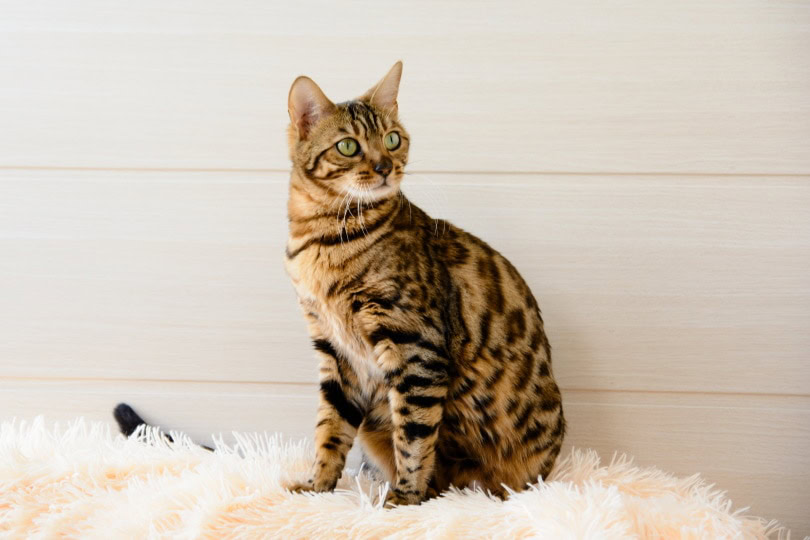
2. Look at Your Cat’s Body Structure and Size
Another way to tell if your cat is a Bengal mix is to examine their body structure and size closely. Bengal cats are known for having long, lean, and muscular bodies. It’s rare for a Bengal cat, or a Bengal mix, to get chubby as their metabolism is faster, and they’re more energetic than regular domestic cats.
More notably, a Bengal has higher hind legs than their front legs, giving them a stride that’s much different from your typical house cat. Bengals also have longer bodies and smaller heads, with eyes that are more round than oval and rounded tips on the tops of their ears. If your cat has several, or all, of these distinct features, there’s a high likelihood that they’re a Bengal mix.
3. Is Your Cat Extremely Agile and an Unusually Strong Jumper?
As we discussed earlier, Bengal cats have long, lithe, muscular bodies that are substantially stronger than the average house cat. For that reason, they can jump higher and love getting as high up as they can wherever they live.
Yes, most house cats are incredible climbers, but a Bengal cat puts their skills to shame. If you’ve found your cat in places where you’ve said, “How in the world did they get up there?” chances are your cat is a Bengal mix.
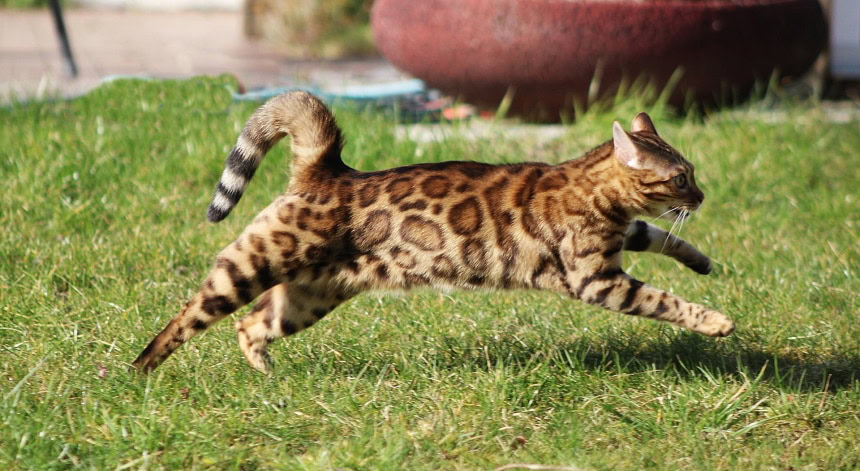
4. Does Your Cat Love Being in and Around Water?
If you’ve had or been around cats, you know they’re not big fans of H2O and generally avoid getting wet at all costs. On the other hand, the Bengal cat loves being in the water, is a strong swimmer, and will seek out water in your home to play with.
If they hear water running, a Bengal cat will investigate and have fun.
5. Does Your Cat Have an “M” on Their Forehead?
One of the distinct markings Bengal cats can have is short stripes with an “M” on their forehead. They also have a thumbprint on their ears, a spot where the fur is shorter and looks like someone pressed their thumb into it. However, tabby cats also have these same markings.
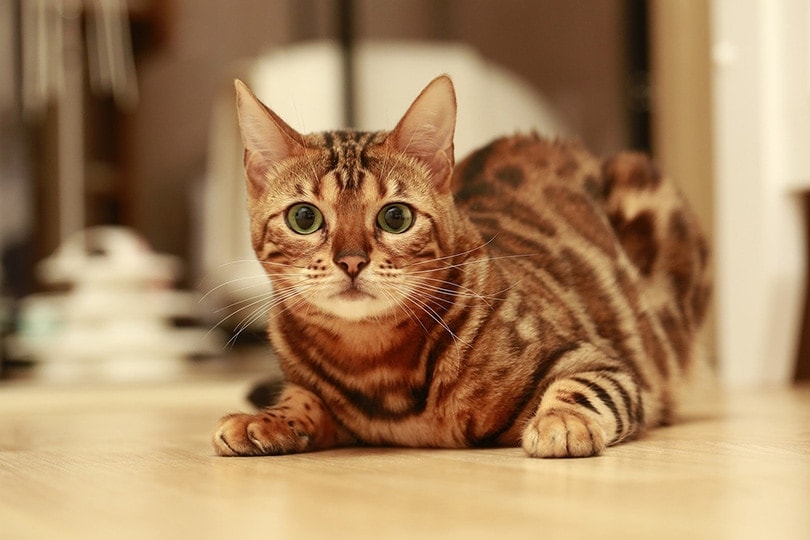
6. Is Your Cat Very Vocal and Talkative?
Some house cats like to talk, and most of them purr, meow, and make other sounds. Bengal cats make all these sounds but with much more enthusiasm and a wider range of them, including deep grunts, high-pitched yowls, and screams.
Bengal kittens also chirp in a way that’s more like a bird than a cat, which is delightfully weird to hear from a cat! If your cat is vocal and makes several sounds utterly different from most cats you’ve had, the possibility is high that they’re a Bengal mix.
7. Does Your Cat Seem To Have Boundless Energy?
One trait differentiating Bengals from house cats is their impressive energy levels. Bengals always seem to be moving and searching for something to do. For this reason, Bengal cats have a hard time being confined to small areas and don’t make the best pets if you live in a tiny home or apartment.
If they’re in a small living space, Bengals will look for ways to escape and have been known to open doors and windows! If your cat is a bundle of non-stop energy, loves to play with you, and is always getting into trouble, they might be part Bengal.
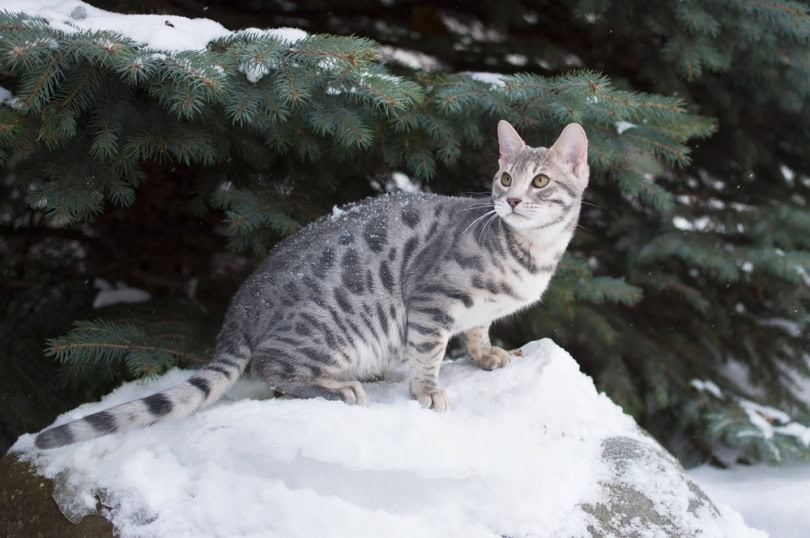
8. Is Your Cat Extremely Intelligent?
Bengal cats are incredibly intelligent and have been known to open doors and windows on their own. Unlike most house cats, they don’t mind if you take them for a walk on a leash.
You can put on a harness and a leash and walk them like you would a dog (but with infinitely more swagger). If you’ve been able to teach your cat complex tricks like using the toilet or playing ice hockey, there’s a distinct possibility they’re a Bengal mix.
9. Check To See if Your Cat’s Coat Is Asymmetrical
Most house and tabby cats are symmetrical, meaning that the fur pattern on one side of their body is identical (or at least close) on the other side of their body. Bengal cats, however, are asymmetrical, and the patterns on the left and right sides of their body are completely different. If your cat has different markings on each side of their body, the chance they’re a Bengal mix is quite high.
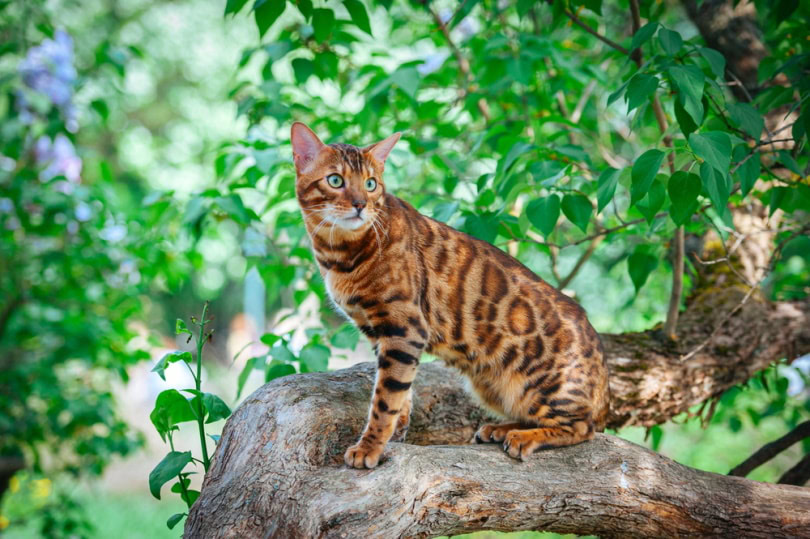
10. Ask Your Vet To Perform a DNA Test
A DNA test is a reliable way to determine your cat’s ancestry. If you’re wondering if your cat is a Bengal mix, simply ask your vet about DNA tests on your cat. Bengal cats have specific DNA markers that will show up in a DNA test, and if they do, you’ll know for sure that they are (or aren’t) a Bengal mix.
The tests can be performed at home, are harmless to your cat, and will give you a “yes” or “no” answer to whether they have Bengal blood in their genes.
Vets can assess your cat’s physical traits by visual examination. Fortunately, vet telehealth has made connecting with one easy, inexpensive, and convenient!

Final Thoughts
Now that you’ve seen how to tell if your cat is a Bengal mix, what do you think? Is there a possibility your frisky feline shares some genes with a Bengal cat, or are you sure that they’re not? Using the 10 ways above (especially #10, the DNA test), you should be able to determine if your cat is part Bengal or just an ordinary (but still lovable) house cat. Whether your cat is a Bengal mix or not, we hope you still find them fun, adorable, and affectionate.
Featured Image Credit: Wildrose Bengals, Shutterstock
Contents
- The 10 Tips on How to Tell If Your Cat Is a Bengal Mix:
- 1. Look Closely at Your Cat’s Coat
- 2. Look at Your Cat’s Body Structure and Size
- 3. Is Your Cat Extremely Agile and an Unusually Strong Jumper?
- 4. Does Your Cat Love Being in and Around Water?
- 5. Does Your Cat Have an “M” on Their Forehead?
- 6. Is Your Cat Very Vocal and Talkative?
- 7. Does Your Cat Seem To Have Boundless Energy?
- 8. Is Your Cat Extremely Intelligent?
- 9. Check To See if Your Cat’s Coat Is Asymmetrical
- 10. Ask Your Vet To Perform a DNA Test
- Final Thoughts
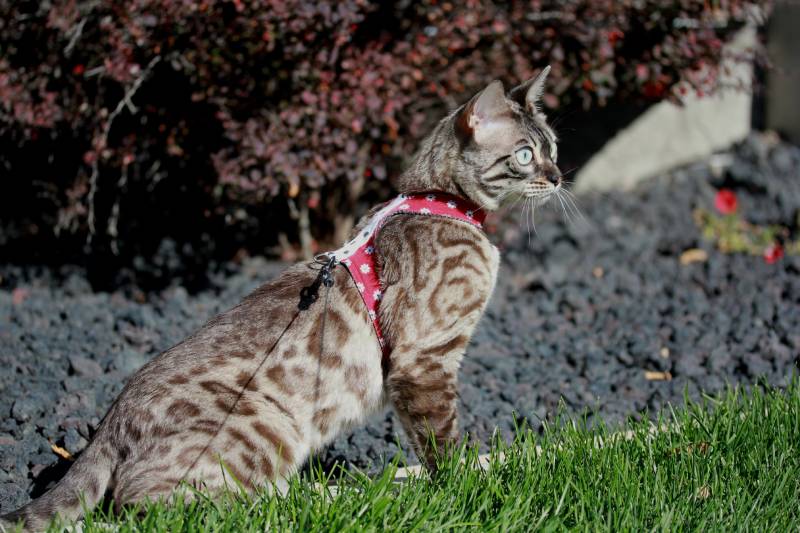






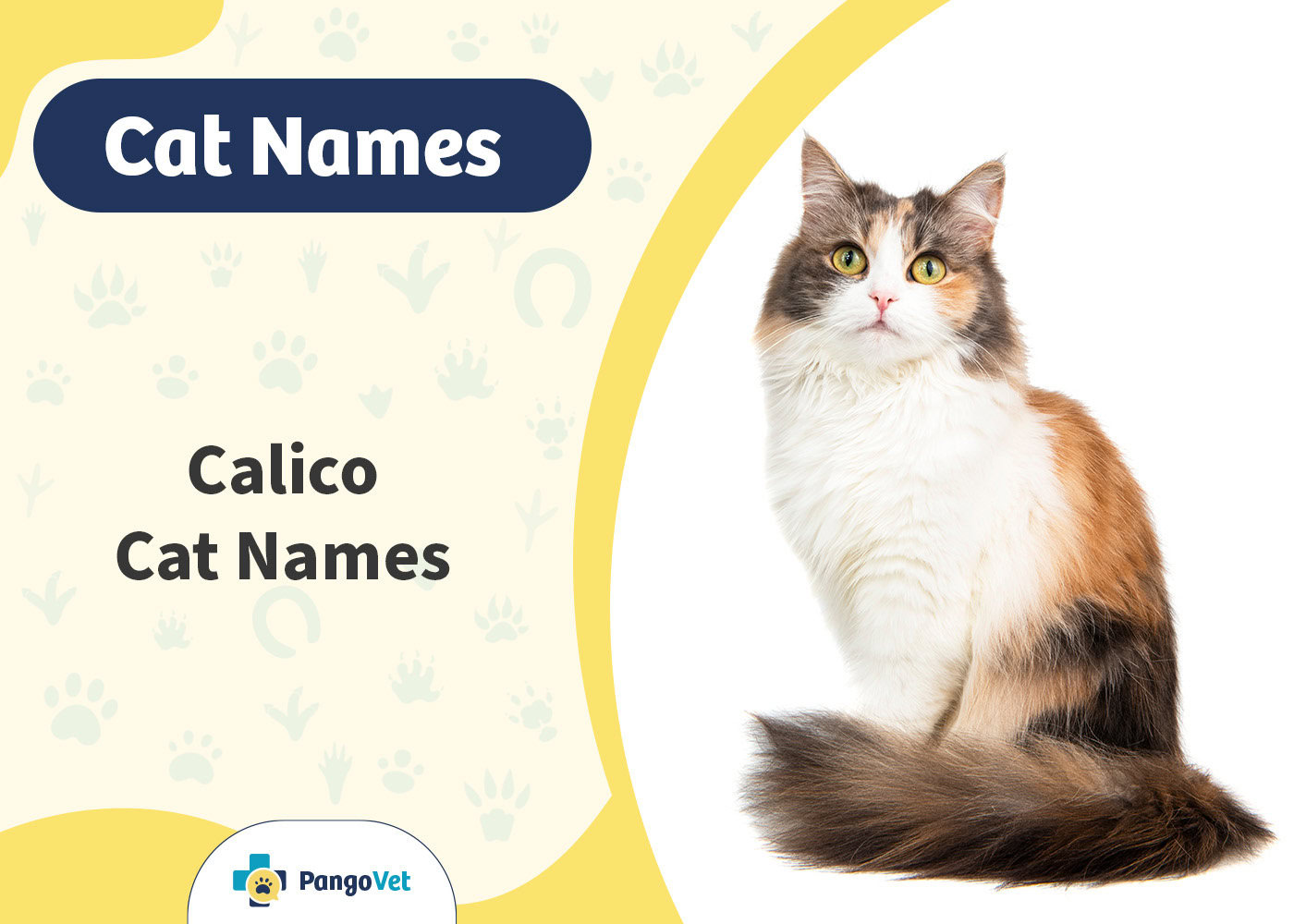
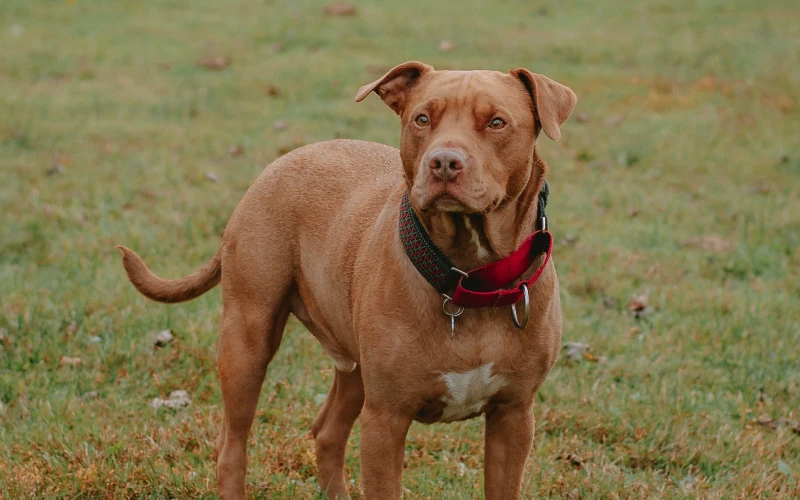
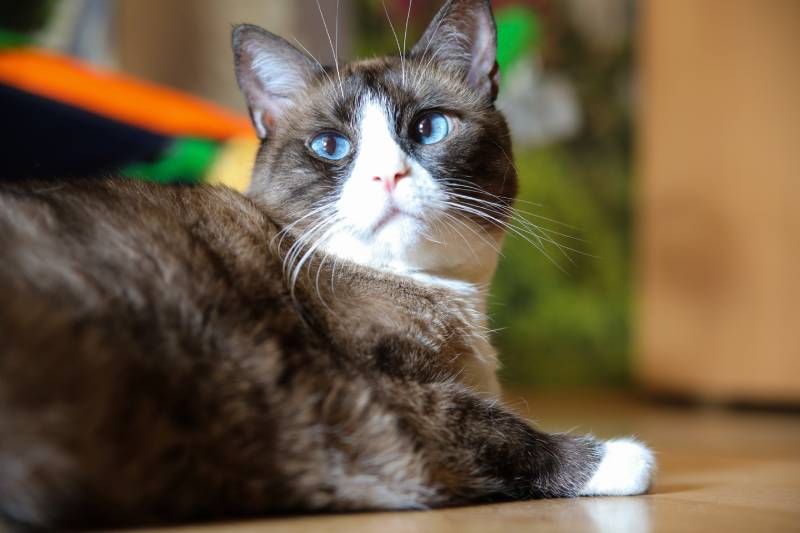



2 Responses
This article does a fantastic job outlining the unique traits of Bengal mixes and providing practical tips to identify them. I appreciate the emphasis on subtle physical and behavioral characteristics, like their asymmetrical coat patterns and love for water—traits that many Bengal owners might initially overlook.
One point that particularly stood out was the role of DNA testing in confirming a Bengal mix. While visual cues and behaviors are excellent indicators, DNA testing offers undeniable clarity, especially for those curious about their cat’s genetic heritage. For example, I’ve seen cases where a Bengal-Persian mix retained the Persian’s dense coat but also displayed Bengal-like energy and intelligence—a combination that could be confusing without testing.
Out of curiosity, how would you advise someone who discovers they own a Bengal mix on managing their unique energy levels and play needs, especially in smaller living spaces? Interactive toys and climbing furniture help, but I’ve found that certain Bengal mixes, like Bengal-Savannah hybrids, thrive with structured outdoor leash time for mental stimulation.
Hello Rafayet,
thank you very much for your great feedback and additional information. We always love when readers contribute in such way. To answer your question, as you mentioned – the right kind of toys and furniture or shelves that your cat can climb and jump on are great options. If you are able to provide your cat with outdoor leash time, that may be even better. The only risk here is potential contact with wild animals. Another option, although not for everyone, is building a catio.
Hope this helps. Have a nice day!